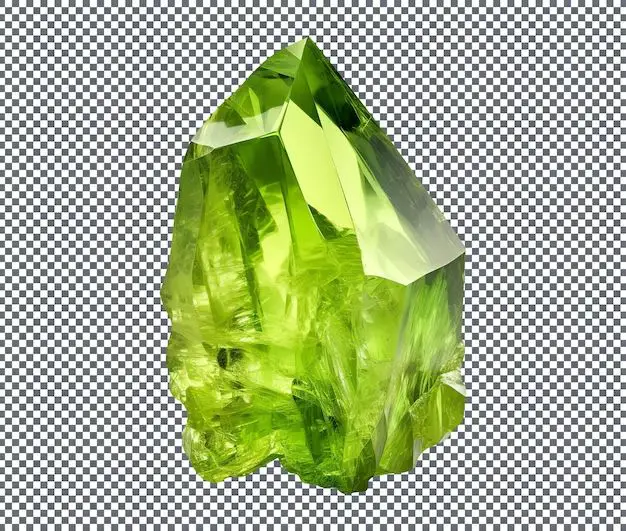Peridot is the birthstone for the month of August. It is known for its vibrant green color that ranges from yellowish-green to olive-green. The peridot gemstone has been prized since ancient times for its beautiful color.
Origin of Peridot
Peridot is the gem quality variety of the mineral olivine. Olivine is an iron magnesium silicate mineral that is commonly found in mafic and ultramafic igneous rocks such as basalt and peridotite. These rocks form deep in the Earth’s mantle and are sometimes brought to the surface by volcanic activity.
The best peridot specimens come from certain localities where conditions are ideal for the formation of gem-quality peridot crystals. Some of the most important deposits are located in Myanmar, Pakistan, Arizona, and Norway. Smaller deposits are found in Brazil, China, Kenya, Saudi Arabia, South Africa, Sri Lanka, and Tanzania.
Peridot formed deep underground often contains inclusions and flaws. However, skilled lapidaries are able to facet small, clean stones from selected rough material. Stones from Myanmar are prized for their deep, slightly bluish-green hues.
History and Lore
The ancient Egyptians were among the first cultures to mine and appreciate peridot. Jewelry containing peridot has been found that dates back to the 2nd millennium BCE. Some historians believe that the famous emeralds that Cleopatra collected were actually peridot gems from mines on the Red Sea coast.
The name “peridot” is derived from the Arabic word “faridat” which means gem. It was sometimes referred to as “evening emerald” because its green color shone brilliantly even in dim candlelight.
For centuries, people believed that peridot had magical powers and could ward off evil spirits and nightmares. Peridot was also believed to amplify healing powers and protect against physical dangers.
Peridot became popular in Europe during the Crusades. Crusaders brought back samples of peridot that originated from mines on an island in the Red Sea called Zabargad or St. John’s Island. This island is now known as Zabarjad.
Properties of Peridot
Peridot has a hardness of 6.5 to 7 on the Mohs scale, making it softer than many other gems but still suitable for use in jewelry. Its relative softness means it should be cared for gently and protected from scratches.
The refractive index of peridot ranges from 1.65 to 1.69. In very simple terms, its refractive index refers to the way the gem bends light that enters it. The higher the refractive index, the more brilliance a gemstone possesses. So while peridot is not as brilliant as diamonds or sapphires, it still exhibits a lovely glow.
Peridot has a specific gravity that ranges between 3.25 and 3.50. This means it is somewhat denser than other gems like emerald but lighter than metals. For its size, it has a pleasing weight when set into jewelry.
The raw material used to cut peridot gems is not very abundant so peridot tends to be affordable especially for larger sizes. Fine peridot gems larger than 3 or 4 carats are quite rare and valuable.
Color and Clarity
Peridot is best known for its vivid green hues that can range from yellowish-green to olive and brownish-green. The most desirable and valuable peridot gems have a deep green color without any hints of yellow or brown. There is no official grading system for peridot color, but most gem experts agree that darker greens are better.
In the gem trade, peridot is described as having good “velvet” color when it appears rich and lush. Lime greens and bluish greens are also prized. The National Gemstone Association assigns fancy names like “Springtime” and “Avocado” to especially attractive shades of peridot.
While darker tones are preferred, most peridot gems have at least some yellowish or brownish tinges when examined closely. In smaller sizes, these secondary hues are less apparent. Peridot’s affordability hinges on the fact that minor color impurities are routinely accepted.
In terms of clarity, peridot gems can often have numerous small inclusions of other minerals. However, the inclusions are often not visible without magnification. Again, eye-clean stones are not terribly difficult to find so excellent clarity is not essential.
| Color | Clarity |
|---|---|
| Deeper greens most valued | Small inclusions usually not visible |
| Velvety green highly prized | Eye-clean stones common |
| Secondary yellow/brown hues | Flawless rare, not needed |
Cutting Peridot
Peridot has excellent cleavage which means it can be cut into polished facets with crisp, sharp edges. The table and pavilion facets should be cut to proper proportions


